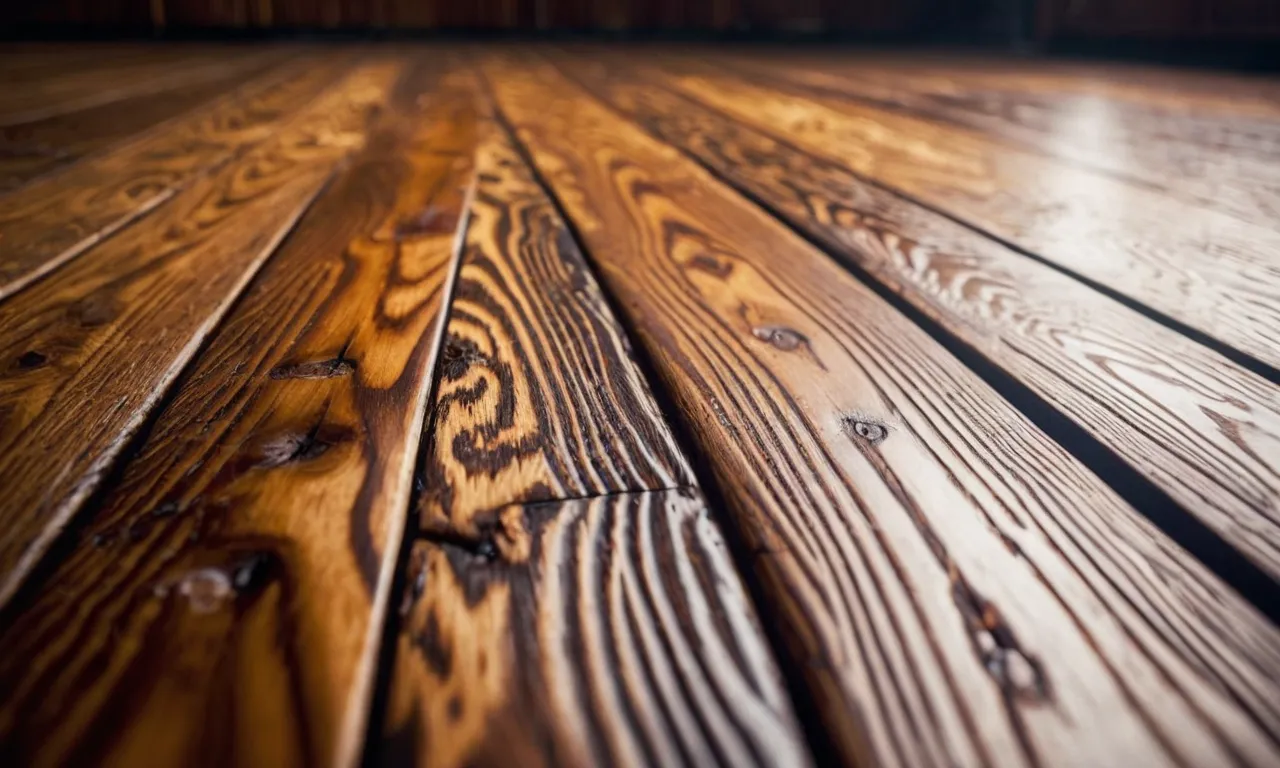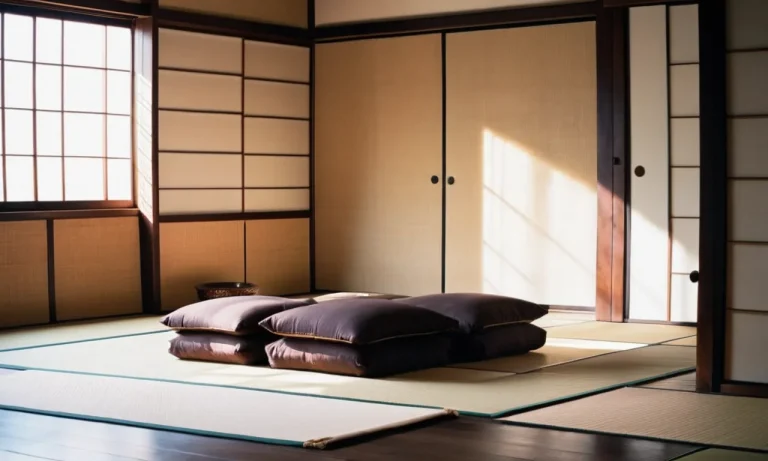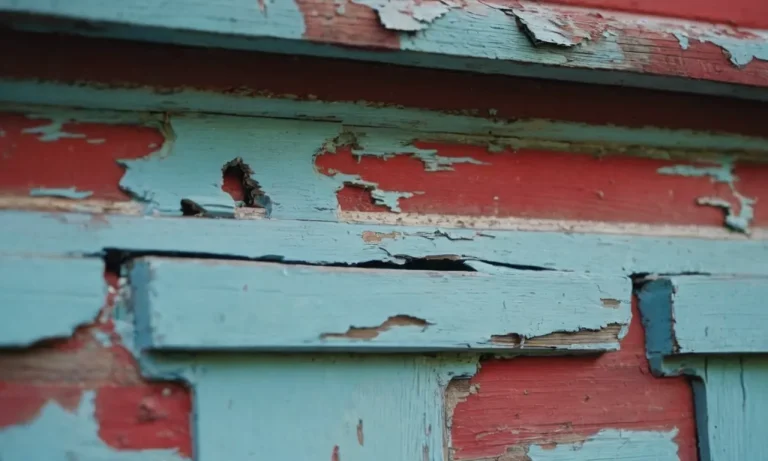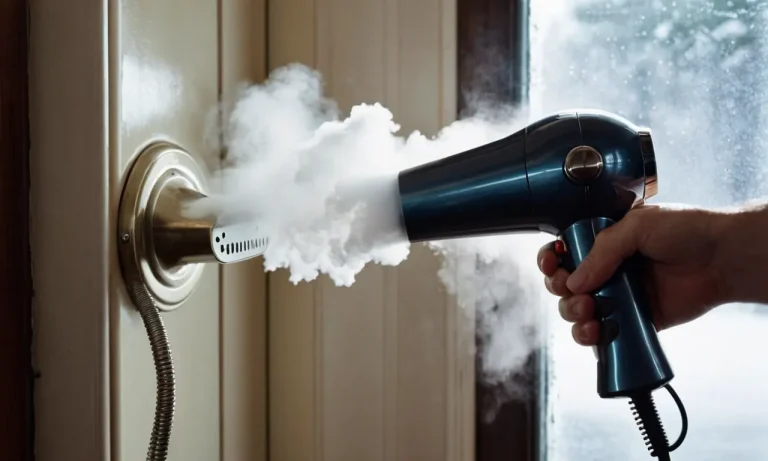How To Fix Warped Wood Floors: A Comprehensive Guide
Wood floors can be a beautiful addition to any home. However, over time, wood floors may start to warp due to changes in humidity and temperature. If you notice your wood floors looking a little wavy or buckled, don’t panic – with the right techniques and tools, you can often fix warped wood floors yourself.
If you’re short on time, here’s a quick answer to your question: Use a moisture meter to identify areas of your floor that need attention, sand down any raised edges, use floor leveling compound to fill in dips, and refinish the floor to restore a flat surface.
In this comprehensive guide, we will cover common causes of warped wood floors, how to diagnose the issue, steps for repairing minor warps, and when to call in a professional for major buckling or dips in your floor.
What Causes Wood Floors to Warp?
Wood floors are a popular choice for homeowners due to their beauty and durability. However, they are not immune to certain issues, such as warping. Understanding the causes of wood floor warping is essential in order to prevent and address this problem effectively.
Changes in Moisture and Humidity
One of the most common causes of wood floor warping is changes in moisture and humidity levels. Wood is a natural material that absorbs and releases moisture depending on the surrounding environment. When exposed to excessive moisture, such as from leaks, spills, or high humidity levels, the wood can absorb the moisture and expand.
Conversely, when the wood dries out, it can shrink. These constant fluctuations in moisture levels can lead to warping.
To prevent moisture-related warping, it is important to maintain a consistent humidity level in your home. Using a dehumidifier in humid environments or a humidifier in dry climates can help regulate the moisture content in the air.
Additionally, promptly cleaning up spills and addressing leaks can prevent excessive moisture from seeping into the wood.
Improper Installation
Another common cause of wood floor warping is improper installation. If the flooring is not properly acclimated to the environment before installation or if the subfloor is not adequately prepared, it can lead to warping.
Additionally, incorrect fastening or inadequate expansion gaps can also contribute to warping over time.
When installing wood floors, it is important to follow the manufacturer’s guidelines and recommendations. This includes allowing the wood to acclimate to the room’s temperature and humidity for a sufficient period of time.
It is also crucial to properly prepare the subfloor and ensure that it is level and dry. Hiring a professional installer can help ensure that the flooring is installed correctly and minimize the risk of warping.
Foundation Settling
In some cases, wood floor warping may be caused by foundation settling. When a foundation settles or shifts, it can cause the floor to become uneven, leading to warping. This is more common in older homes or in areas with unstable soil conditions.
If you suspect that foundation settling may be the cause of your wood floor warping, it is important to address the underlying foundation issues. Consulting with a professional contractor or structural engineer can help determine the best course of action to stabilize the foundation and prevent further damage to the flooring.
Diagnosing Warped Wood Floors
Warped wood floors can be a frustrating problem for homeowners. Not only do they affect the aesthetic appeal of your home, but they can also pose safety hazards. Before you can fix the issue, it’s important to accurately diagnose the cause of the warping.
Here are some key methods to help you diagnose warped wood floors:
Look for Visible Buckling or Dips
One of the most obvious signs of a warped wood floor is visible buckling or dips. Take a close look at the surface of your floor and check for any areas that appear raised or uneven. These irregularities are often caused by moisture-related issues, such as water damage or high humidity levels.
Use a Moisture Meter
Using a moisture meter is a reliable method to assess the moisture content of your wood floors. By measuring the moisture levels in different areas of the floor, you can determine if there are any significant variations.
High moisture content can lead to warping and can be caused by factors such as leaks, improper subfloor installation, or inadequate ventilation.
Check Other Signs of Moisture Issues
Aside from visible buckling or dips, there are other signs that can indicate moisture-related problems in your wood floors. These include dark stains, mold or mildew growth, a musty odor, or a feeling of dampness when walking on the floor.
If you notice any of these signs, it’s highly likely that moisture is the root cause of your warped wood floors.
For more information on diagnosing and fixing warped wood floors, you can visit The Spruce. They provide detailed insights and step-by-step guides to help you tackle this common issue.
Repairing Minor Warps in Wood Flooring
Minor warps in wood flooring can be a common issue, but the good news is that they can often be easily fixed. Here are some simple steps you can take to repair minor warps in your wood floors:
Sand Down Any Raised Edges
If you notice any raised edges in your wood flooring, the first step is to sand them down. Start by using a coarse-grit sandpaper to remove any high spots or uneven areas. Then, switch to a finer-grit sandpaper to smooth out the surface.
Be sure to sand with the grain of the wood to achieve the best results.
Pro tip: Before sanding, make sure to clean the area thoroughly to remove any dirt or debris. This will help prevent scratches on the surface of the wood.
Use Floor Leveling Compound for Dips
If you have any dips or low spots in your wood flooring, a floor leveling compound can be a great solution. These compounds are specially designed to fill in gaps and level out uneven surfaces. Simply follow the manufacturer’s instructions to apply the compound to the affected areas.
Did you know? Floor leveling compounds are available in different types, such as cement-based or self-leveling compounds. Choose the one that is most suitable for your specific needs.
Refurbish Wood Floor Finish
Once you have repaired any raised edges or dips in your wood flooring, it’s important to refurbish the finish to protect the wood and give it a refreshed look. Start by cleaning the floor thoroughly to remove any dust or debris.
Then, apply a new coat of finish, such as polyurethane or wax, following the manufacturer’s instructions.
Expert tip: If you’re not sure which type of finish to use or how to apply it, consult a professional or refer to reliable sources like The Spruce or This Old House for detailed guidance.
By following these simple steps, you can easily repair minor warps in your wood flooring and restore its beauty. Remember, if you’re dealing with more severe warping or if you’re unsure about the best course of action, it’s always best to consult a professional for expert advice.
When to Call a Professional
While there are certain instances where you can fix warped wood floors on your own, there are times when it’s best to call in a professional. Here are some situations where seeking professional help is highly recommended:
Major Buckling
If you notice significant buckling in your wood floors, where the boards are lifting and warping dramatically, it’s time to bring in the experts. Major buckling can be a sign of underlying structural issues or excessive moisture damage.
A professional will have the knowledge and experience to assess the cause of the buckling and provide the appropriate solution.
Large Gaps or Dips
When your wood floors have noticeable gaps or dips, it’s a clear indication that something is not right. Large gaps between boards can occur due to moisture changes or improper installation, while dips can result from subfloor issues.
A professional can determine the cause of these problems and offer the necessary repairs or replacements to ensure your floors are restored to their original condition.
Extensive Moisture Damage
Wood floors are susceptible to moisture damage, and if the warping is a result of this, it’s crucial to call a professional. Extensive moisture damage can lead to mold growth, rot, or structural issues, which require specialized expertise to address.
Professionals have the tools and knowledge to identify the extent of the damage, mitigate any further issues, and restore your wood floors to their former glory.
Remember, attempting to fix these more complex issues on your own may result in further damage or ineffective repairs. Calling a professional will not only save you time and effort but also ensure that the underlying problems are properly addressed.
Preventing Future Warping
Maintain Ideal Indoor Humidity
One of the key factors in preventing wood floor warping is maintaining the ideal indoor humidity level. Wood tends to expand and contract with changes in humidity, which can cause it to warp over time. The ideal humidity level for wood floors is typically between 35% and 55%.
To maintain this level, it is recommended to use a humidifier in dry climates or during the winter months when the air tends to be drier. On the other hand, a dehumidifier can help reduce excess moisture in humid climates or during the summer months.
By keeping the indoor humidity within the recommended range, you can greatly reduce the chances of your wood floors warping.
Address Moisture Issues Quickly
Moisture is one of the biggest culprits when it comes to wood floor warping. If you notice any signs of moisture damage, such as buckling or cupping, it’s important to address the issue promptly to prevent further damage.
Start by identifying the source of moisture, whether it’s a leaky pipe, a roof leak, or excessive humidity in the room. Once the source is identified, fix the problem and take steps to dry out the affected area. This may involve using fans, dehumidifiers, or even professional drying equipment.
By addressing moisture issues quickly, you can minimize the risk of your wood floors warping and save yourself from costly repairs down the line.
Use Protective Floor Mats
Another way to prevent warping in wood floors is to use protective floor mats in high-traffic areas or areas prone to moisture. Floor mats can help absorb excess moisture, prevent scratches, and provide a barrier between the wood and potential damage.
Make sure to choose mats that are specifically designed for wood floors and have a non-slip backing to prevent any accidents. Additionally, regularly clean and inspect the mats to ensure they are not trapping moisture or debris that could potentially damage the wood.
By using protective floor mats, you can add an extra layer of defense against warping and prolong the lifespan of your wood floors.
Remember, prevention is always better than cure when it comes to warping wood floors. By following these preventative measures, you can significantly reduce the risk of your wood floors warping and maintain their beauty and durability for years to come.
Conclusion
Warped wood floors can be an annoying and costly issue, but in many cases, some DIY techniques can restore your floors to flat with a bit of work. Focus on identifying and addressing any moisture issues first, then sand and fill the floor as needed.
For extreme warping or buckling across large areas, bringing in a flooring professional will give you the best long-term results. With some preventive maintenance and prompt attention when you notice issues starting, you can minimize wood floor warps and keep your floors looking beautiful for years to come.







